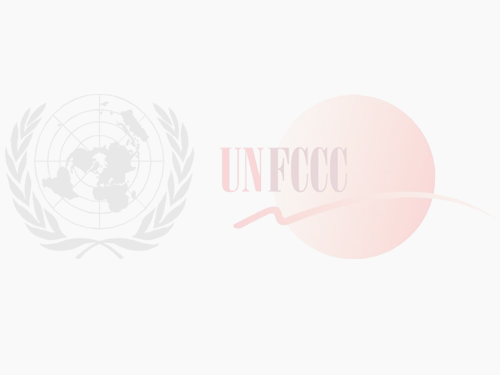 |
UNFCCC Webcast
24th sessions of the SBs
|

|
Workshop on carbon dioxide capture and storage as CDM project activities 10 a.m. – 1 p.m. |
||||
|
This event aims to facilitate an exchange of views on carbon dioxide capture and storage as clean development mechanism (CDM) project activities, taking into account issues relating to project boundary, leakage, permanence and other issues |
||||
| Session I: Opening and setting the scene |
||||
| Opening introduction and aim of the workshop by the co-chairs Mr. Georg Børsting and Mr. Hernán Carlino | ||||
| Summary of the SBSTA workshop & overview of 2006 IPCC guidelines relevant to the CDM discussions |
||||
| • | Storage site selection; | |||
| • | Risks of physical leakage; | |||
| • | Techniques and technologies. | |||
| (Heleen de Coninck) |
||||
| a. Introduction & overview of topics provided by parties & CDM terminology in the context of CCS |
||||
| b. Summary of the current CCS methodologies submitted to the EB | ||||
| • |
NM0167: The White Tiger Oil Field Carbon Capture and |
|||
| • | NM0168: The capture of the CO2 from the Liquefied Natural Gas (LNG) complex and its geological storage in the aquifer located in Malaysia |
|||
| • | SSC_038: Anthropogenic Ocean Sequestration by Changing the Alkalinity of Ocean Surface Water |
|||
| (Secretariat) | ||||
| Session II: Open discussion session |
||||
| Boundary | ||||
| • | Definition of the project boundary (capture, process, injection & storage); |
|||
| • | Issues arising out of project boundaries/storage that span across international borders (NAI/AI//non-KP); |
|||
| • | Several projects using one reservoir. | |||
| Leakage | ||||
| • | Accounting for emissions resulting from emissions due to enhanced hydrocarbons recovery (EOR, ECBM & EGR); |
|||
| • | Accounting for up and downstream emissions; | |||
| • | Validation & verification of CCS projects; |
|||
| • | Liability with regard to leakage beyond the crediting period. | |||
| Permanence | ||||
| • | Accounting & responsibility for impermanence and monitoring during and after the crediting period; |
|||
| • | Seepage methodologically; | |||
| a. | Prescription of selection criteria (who & what?); | |||
| b. | Methods of storage under the CDM; | |||
| c. | Monitoring, methods and periodicity; | |||
| d. | Force majeure and accidents. | |||
| Other issues concerning CCS in the CDM | ||||
| • | Additionality issues; | |||
| • | Technology transfer issues; | |||
| • | CDM modalities & procedures; | |||
| • | Sequestration or emission reductions. | |||
| Session III: Conclusions and closing |
||||
| Closing remarks by the chair and summary conclusions | ||||